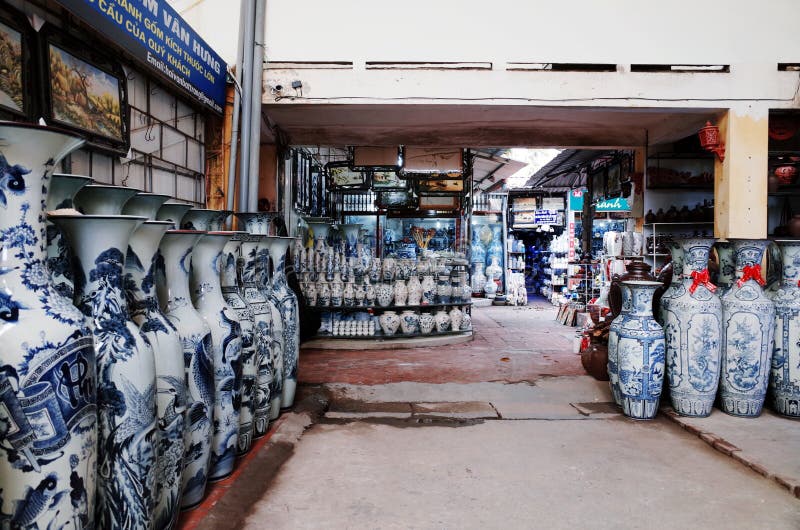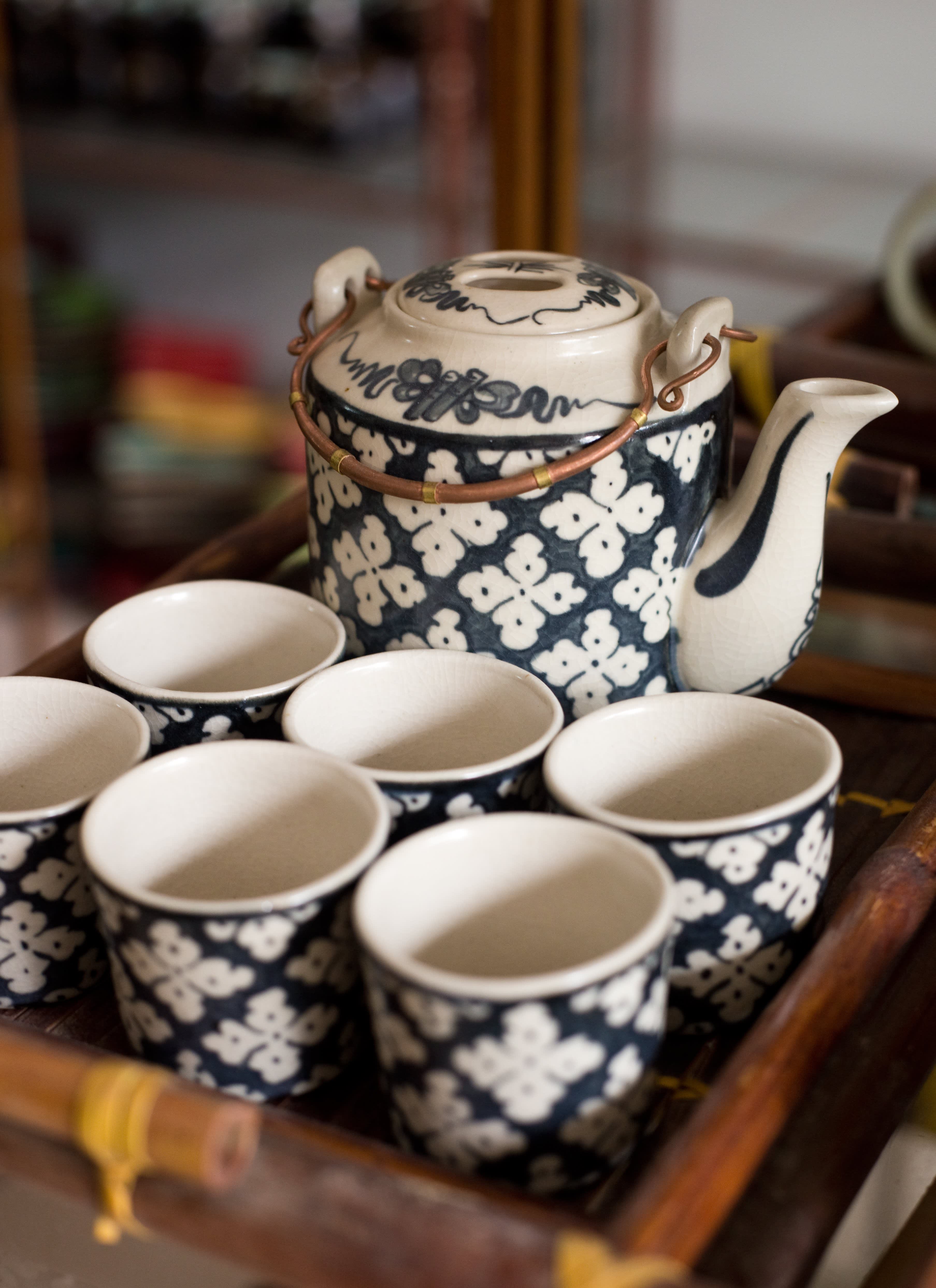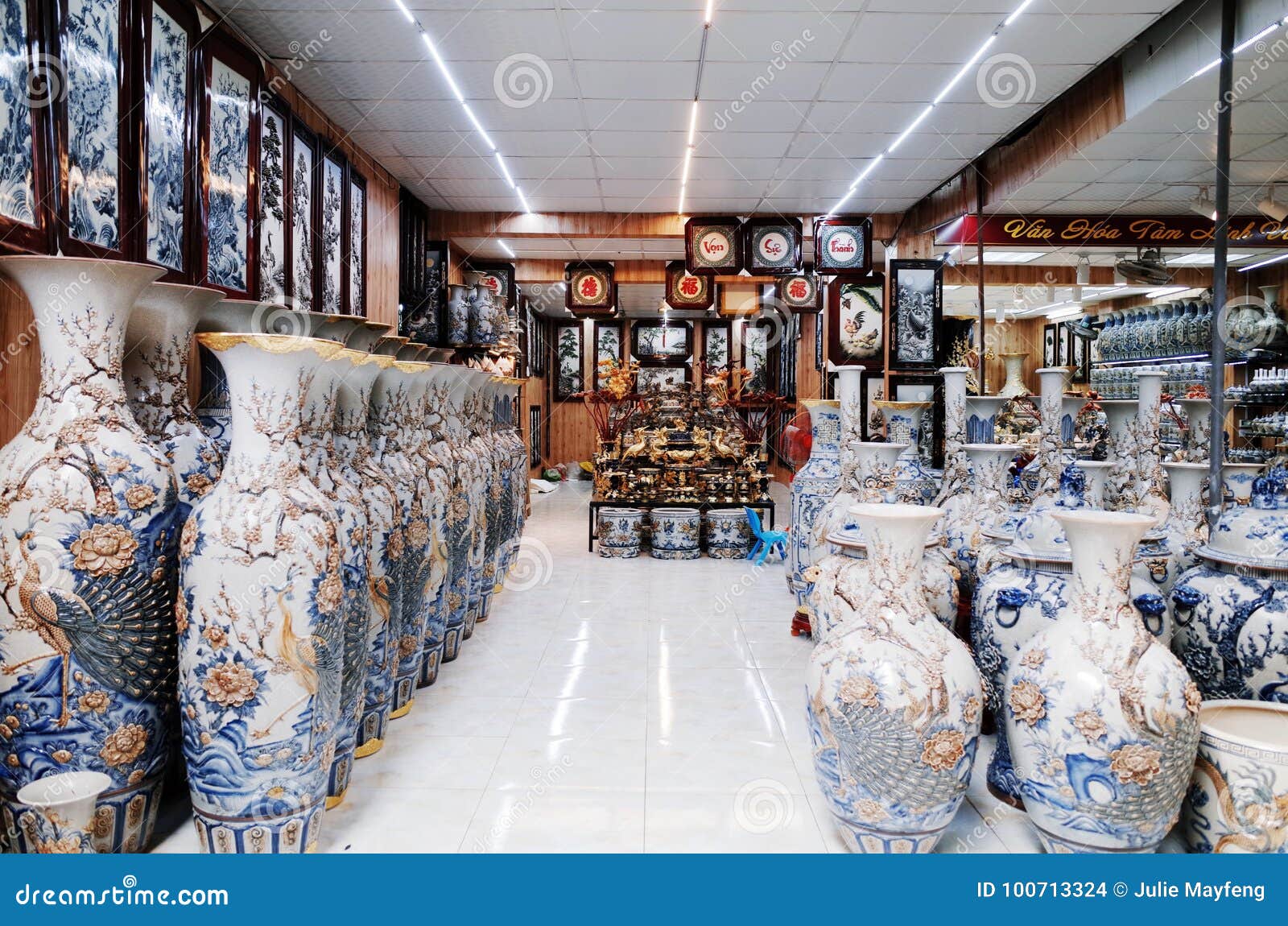News
Admire Modern Designs of Bat Trang Ceramics
Bat Trang ceramics have long held a cherished place in Vietnamese culture, renowned for their exquisite craftsmanship and timeless beauty. As the world evolves, so too does this ancient craft, blending traditional techniques with contemporary artistic visions. The modern designs of Bat Trang ceramics not only preserve heritage but also embrace innovation, making them highly sought-after for both collectors and everyday admirers. This article delves deeply into the fascinating world of Bat Trang ceramics, exploring their evolution, design elements, cultural significance, and the future prospects of this enduring art form.
The Evolution of Bat Trang Ceramics: Tradition Meets Modernity

The rich history of Bat Trang ceramics dates back over 700 years, originating from Bat Trang village near Hanoi, Vietnam. Traditionally characterized by blue-and-white porcelain, these ceramics were once solely utilitarian objects or religious artifacts. However, through centuries, artisans have adapted and evolved the craft to meet changing tastes and demands.
Understanding this evolution is key to appreciating the modern aesthetic and technical advances in Bat Trang ceramics today.
Historical Roots of Bat Trang Ceramics
Bat Trang’s ceramic tradition began during the Ly and Tran dynasties. Early works focused on functional wares such as bowls, jars, and teapots, often decorated with cobalt blue motifs featuring lotus flowers, dragons, and phoenixes. These pieces reflected spiritual beliefs and everyday life.
The meticulous hand-painting and kiln-firing techniques were passed down through generations, preserving the village’s reputation for quality craftsmanship. This historical foundation laid the groundwork for future experimentation and refinement.
Transition to Contemporary Styles
In recent decades, the global art market and domestic demand sparked a transformation in Bat Trang ceramics. Artisans began incorporating new shapes, colors, and glazing methods while maintaining traditional handcrafting skills. Modern designs now range from minimalistic forms to vibrant, abstract patterns that appeal to younger audiences and international consumers.
This transition was also influenced by exposure to international ceramic trends, encouraging cross-cultural fusion without losing local identity. The result is a dynamic interplay between old and new, where classic motifs may be stylized or reimagined with bold palettes.
Impact of Technology on Production
While Bat Trang remains strongly rooted in handmade processes, technological advancements have affected production efficiency and quality control. For example, improved kilns allow more precise temperature regulation, resulting in greater color stability and durability.
Additionally, digital design tools facilitate prototyping and pattern development, enabling artists to experiment safely before committing to expensive firing cycles. Nonetheless, the emphasis remains on human touch — each piece undergoes finishing and detailing by skilled hands.
Distinctive Elements of Modern Bat Trang Ceramics Design

Modern Bat Trang ceramics exhibit distinct features that differentiate them from both ancient relics and mass-produced pottery. These elements reveal how artisans honor tradition yet innovate boldly.
Before moving into detailed characteristics, it is important to note how these design elements contribute to a unique aesthetic that combines functionality, artistry, and cultural resonance.
Innovative Use of Color and Glaze
Traditional Bat Trang pottery relied heavily on natural tones and cobalt blues. Modern artisans expand the color palette significantly, incorporating earthy browns, vibrant reds, pastel greens, and even metallic finishes.
These innovations are achieved through both new natural mineral blends and synthetic pigments compatible with high-temperature firings. The glaze application has also become more experimental, ranging from matte and satin finishes to glossy and crackled textures, enhancing visual depth.
Colors are carefully selected to evoke mood and narrative, sometimes reflecting contemporary themes or abstract concepts rather than conventional symbolism.
Creative Form and Function
Breaking away from the classic vase, bowl, and plate shapes, modern Bat Trang potters explore irregular geometries, asymmetry, and modular designs. These forms challenge traditional perceptions of ceramics, turning everyday objects into sculptural artworks.
Functional pieces may incorporate ergonomic considerations suited to modern lifestyles — lightweight materials, stackability, or multi-purpose use. Decorative items might prioritize conceptual expression over utility, bridging craft and fine art.
This creative freedom allows Bat Trang ceramics to fit seamlessly into diverse interior aesthetics, from rustic to ultra-modern spaces.
Symbolism and Motifs Reinterpreted
While many traditional symbols persist, such as lotus flowers symbolizing purity or dragons representing power, their depiction is often stylized or abstracted in modern pieces. This reinterpretation invites viewers to engage more personally with the artwork rather than relying on established meanings.
Some contemporary designs introduce new motifs inspired by urban life, technology, nature conservation, or social issues, reflecting the evolving cultural context of Vietnam and the broader world.
Such symbolism enriches the dialogue between artisan and audience, elevating Bat Trang ceramics beyond mere decoration.
Cultural Significance and Contemporary Relevance of Bat Trang Ceramics

Bat Trang ceramics remain a vital cultural emblem for Vietnam, encapsulating history, identity, and artistry. Their modern designs continue to resonate deeply within Vietnamese society and beyond.
Examining the cultural layers behind these ceramics reveals why they maintain relevance and emotional connection today.
Heritage Preservation Through Innovation
The commitment of Bat Trang craftsmen to preserve traditional skills ensures the survival of intangible cultural heritage. Simultaneously, embracing innovation prevents stagnation and loss of interest.
This balance exemplifies how living traditions adapt to current realities, strengthening communal pride and continuity. Workshops and festivals dedicated to Bat Trang ceramics foster knowledge transmission amongst younger generations.
Furthermore, collaborations between artisans and designers encourage fresh perspectives while respecting authenticity.
Economic and Social Impact
Bat Trang ceramics contribute significantly to the local economy by attracting tourism, generating employment, and promoting small-scale entrepreneurship. The village’s annual ceramic festival draws visitors eager to witness live demonstrations and purchase unique artworks.
Socially, the craft empowers communities by fostering cooperative networks and reinforcing cultural identity. It also offers pathways for education and skill development.
On an international level, Bat Trang ceramics serve as cultural ambassadors, showcasing Vietnam’s artistic heritage and craftsmanship excellence.
Global Recognition and Collectors’ Appeal
The distinctive blend of tradition and modernity in Bat Trang ceramics appeals to collectors worldwide who seek meaningful, handcrafted works. Increasing participation in international exhibitions and fairs has elevated global awareness.
Art critics often highlight Bat Trang’s ability to innovate within the framework of centuries-old techniques as a model for sustainable cultural creativity.
Moreover, the rising popularity of minimalist and artisanal decor trends aligns perfectly with the aesthetics of contemporary Bat Trang designs, enhancing export potential.
Techniques and Materials Behind Modern Bat Trang Ceramics
The creation of modern Bat Trang ceramics involves a fascinating combination of time-honored methods and selective incorporation of new materials and tools. Understanding these technical aspects gives deeper appreciation to the artistry involved.
The following sections discuss the core techniques and material choices shaping the final pieces.
Clay Selection and Preparation
Bat Trang potters traditionally use locally sourced white clay known for its fine texture and plasticity. This clay imparts strength and whiteness ideal for decorative painting.
In modern times, some artisans blend imported clays to achieve specific properties like enhanced translucency or reduced shrinkage during firing.
Preparing the clay includes thorough kneading to remove air bubbles, ensuring uniform consistency crucial for shaping and preventing cracks.
Hand-building and Wheel Throwing Methods
Unlike industrial pottery, most Bat Trang ceramics retain manual forming techniques. Artisans skillfully shape pieces either by wheel-throwing—spinning the clay on a potter’s wheel—or hand-building using coils and slabs for complex forms.
Wheel throwing demands significant expertise to produce symmetrical vessels quickly. Hand-building offers flexibility for unique, sculptural designs.
Each method leaves subtle fingerprints conveying the maker’s presence, a valued trait among connoisseurs.
Surface Decoration and Firing Process
Decorative techniques include underglaze painting, engraving, appliqué, and stamping. Colors are applied meticulously before glazing to ensure vibrancy after firing.
The firing process typically uses wood-fired or electric kilns reaching temperatures of around 1250°C. Controlled cooling prevents thermal shock.
Innovations such as multiple firings allow layering effects, while experimenting with different atmospheres inside the kiln yields varied surface textures.
The Future of Bat Trang Ceramics: Trends and Challenges
As Bat Trang ceramics move further into the 21st century, various opportunities and challenges shape their trajectory. Artists and stakeholders must navigate market dynamics, environmental concerns, and cultural preservation.
Exploring these future perspectives provides insight into the resilience and adaptability of this venerable tradition.
Embracing Sustainability and Eco-Friendly Practices
Modern consumers increasingly value environmentally responsible products. Bat Trang artisans are responding by sourcing sustainable raw materials, minimizing waste, and adopting cleaner firing technologies.
Efforts to reduce carbon footprint include exploring alternative fuels and recycling clay scraps.
Such ecological awareness strengthens the brand image and aligns with global movements toward green craftsmanship.
Digital Integration and E-commerce Expansion
The digital revolution offers powerful tools for marketing, education, and sales. Many Bat Trang studios now maintain online platforms showcasing catalogs, tutorials, and virtual tours.
E-commerce facilitates reaching international buyers directly, bypassing intermediaries.
Additionally, augmented reality applications enable customers to visualize ceramics in home settings before purchasing.
Embracing digitalization enhances accessibility while preserving personalized service.
Nurturing Young Talent and Collaborative Innovation
Sustaining Bat Trang’s legacy depends on inspiring new generations. Educational programs, apprenticeships, and partnerships with design schools foster skill development and creativity.
Collaborations between traditional potters and contemporary artists lead to groundbreaking collections appealing to diverse audiences.
Government and private sector support remain crucial in funding infrastructure and promotional activities.
Conclusion
Bat Trang ceramics represent a remarkable blend of heritage and innovation, where ancient craftsmanship meets modern design sensibilities. Through evolving aesthetics, diverse materials, and adaptive production methods, Bat Trang artisans continue to create pieces that are not only beautiful and functional but also culturally resonant and globally admired. The journey of Bat Trang ceramics—from traditional blue-and-white porcelain to contemporary art forms—illustrates the power of cultural preservation combined with creative exploration. As they face future challenges and opportunities, Bat Trang ceramics remain a vibrant symbol of Vietnamese artistry, captivating hearts worldwide with their enduring charm and modern elegance.
